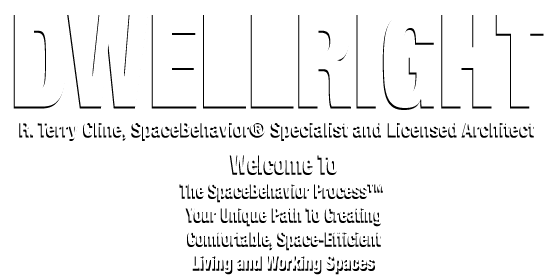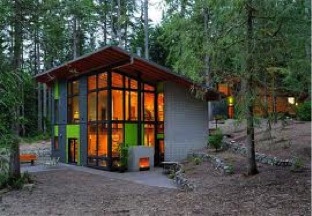“Difference Between a Building and a Work-of-Architecture…. a room and a space.”
The focus of my blogsite, website, and business can be summarized by an excerpt from the book:
Manipulating Spaces -What We Do To Them and What They Do To Us.
by Professor of Architecture, SpaceTherapy® Co-Founder, and long time colleague and friend, Roger Richmond. Copyright ©1997 -Purchase of this book is available upon request.
“A ‘Building’ in today’s society satisfies basic requirements in basic ways. A ‘Work-of-Architecture’ may go well beyond the limit of a rudimentary building in acknowledging and providing for the loftier attributes and potential of the human experience.
A building contains rooms. A work-of-architecture contains spaces. A building will provide a bedroom, whereas a work-of-architecture will provide space to encourage sleep, love-making, reading, intimacy, or staying up late watching the news, without disturbing another.
If the volume supports all the activities, the activities may be encouraged to occur. If it doesn’t, they may not occur. Intimacy may be compromised, and lovemaking may become the victim in a room that doesn’t support its occurrence.
There is a qualitative and quantitative difference between a building and a work-of-architecture, as there is a difference between a building-designer and a work-of-architecture-designer. The former identifies, for instance, size requirements for furnishings and numbers of users as the important yardstick for the idea of a room. Often the volume standard in a building is really a furniture area necessity, with a bedroom having enough physical square footage for a bed, a dresser, perhaps a chair, and enough ‘free’ room for us to move about easily within it. If the space is for intimacy in love, design considerations beyond simple survival and area requirements for adequate furniture would become more pressing.
Buildings are frequently limited by the inadequacy of their design to elementary arrangements of the square foot requirements of basic need rooms. Building designers often produce work based upon data like….
Living room 600 Sq. Ft.
Bedroom 250 Sq. Ft.
Dining room 100 Sq. Ft.
Arrange all these furniture-dictated-sized rooms together so they ‘work’ with sufficient and efficient circulation, make it look like a ‘New Colonial’, or a ‘Post Modern’ or whatever is the in style at the time, and you may call yourself, as numerous people do, a real designer.
This is how many individuals envision their own environments or environments for others. A room-in-a-building approach may form the basis for their perceptions, preconceptions, and evaluations of what makes for ‘good’ design.
The overall appearance of the building is usually conceived from the ‘outside (appearance) in’ rather than from the ‘inside (content and nature of the activity) out’ – the classic Form Follows Function scenario. (Frank Lloyd Wright, however, felt that form and function are one). Works-of-architecture ideally grow from the influence of more evolved humanistic needs and goals without the preoccupations and preconceptions of image. The criteria for a work-of-architecture may look something like this….
Public Space (Living room) – Communication, Interaction, Socializing,
Private Space (Bedroom) – Intimacy, Love Making, Privacy, Retreat, Security, Personalness, Reflection.
Food Space (Dining room) – Communication, Interaction, Sharing, Union, Growth, Socialization.
The building or room designer is concerned with size. The work-of-architecture or space designer is also concerned with size, and in addition, how the space may support and encourage a greater depth of experience beyond a mere square foot satisfaction. What would a space look like that supports intimacy? is a question a space designer might ask. A room designer might state, A bedroom has to be this big….
A building is a collection of rooms. A work-of-architecture is a collection of spaces.”
To be notified of new post, please subscribe to the Blog page.
For more information on our work or to set up a NO-RISK, FULLY -GUARANTEED On-Site or On-Line sliding fee scale consultation, helping you put to better use what you already have, visit the Connect page.







